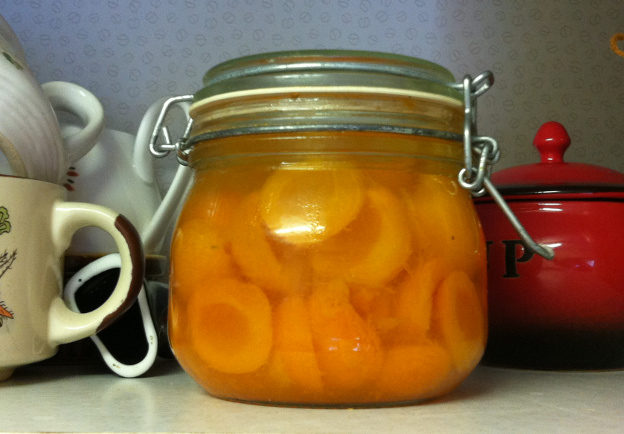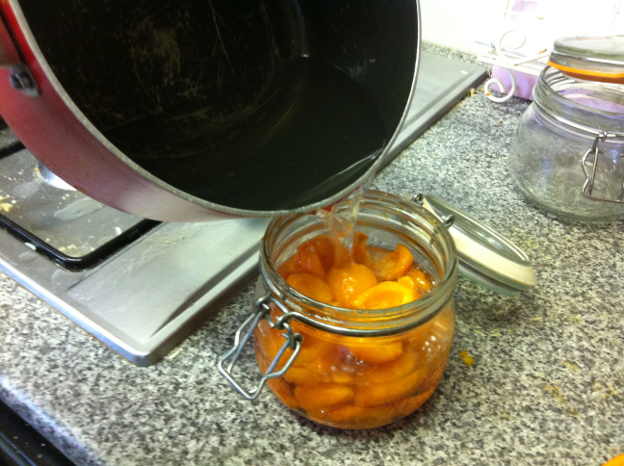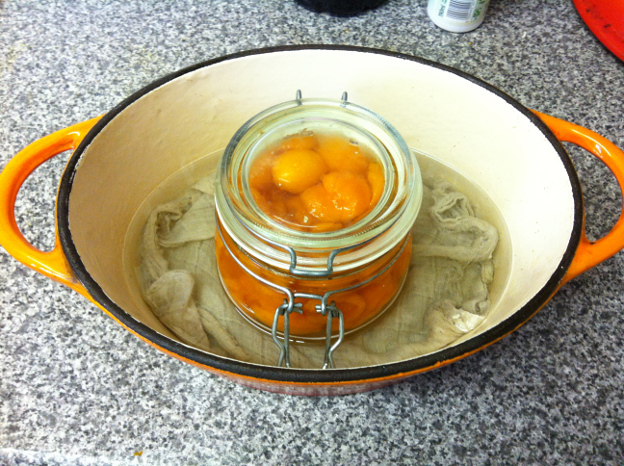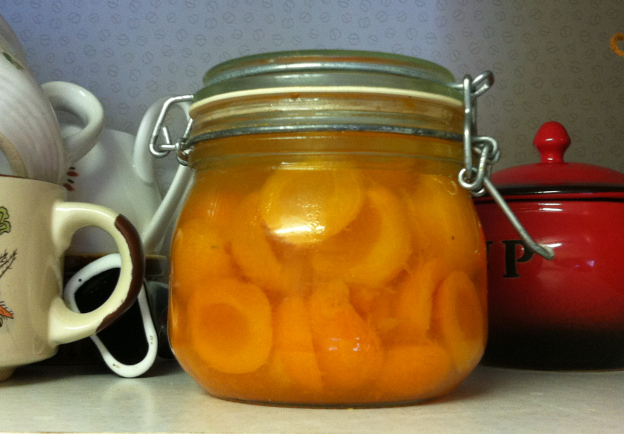Having already made two batches of apricot jam, and a gallon of apricot wine, we decided our next adventure in apricot preservation would be bottling. The bottling of fruits is a centuries old tradition, nowadays all but replaced with tinned fruit. We don’t have the equipment necessary to tin our own fruit, so we decided to give bottling a go. We’d never done it before, but in the River Cottage Handbook on Preserves, Pam Corbin covers the process in some detail, including a very helpful table which shows, by fruit and by heating method (more on this later), the heating time required.
This was the last batch of apricots we received, and there was only enough for one jar. I’m currently planning to serve it with custard over the winter months. We have plenty of plums still on the trees, so I decided that assuming this process we successful, I would repeat it with plums to ensure we have a decent supply of bottled fruit for winter puddings.
We started by preparing a syrup made from water and sugar. The book gives the ratios of these to make three different strengths of syrup: a light, a medium and a heavy. We made the medium syrup. We then removed the skins from the apricots by immersing them in boiling water for a minute, then placing them into cold water until they cooled, and we then peeled off the skins with our fingers (the skins just slipped off as soon they were touched).
The skins removed, we packed the apricots tightly into the jar and poured in the syrup. After making sure there were no air bubbles in the syrup, the next step was to heat the jar. In the book, Pam Corbin says that there are many methods to accomplish this, but she provides two options which can be used for most fruits: the water bath method, and the oven method. I was familiar with the water bath method, as I remember seeing Dick and James Strawbridge using it to bottle tomatoes in brine in their Practical Self-Sufficiency book. However, the oven method seemed the easier option. We would like to try both methods in time, but for the sake of ease we decided to use the oven method this time.
So we lined a deep pan with a tea towel to prevent the jar from directly touching the bottom, and put a little water in the pan. Leaving the lid of the jar unclipped, we heated it in the oven for the time specified in the book. After the specified time we removed the jar, closed the clip to seal the jar, and left it to cool overnight.
The next morning it was with trepidation that I tested the seal of the jar. For some reason I expected that it wouldn’t work. I suppose the whole process had seemed too easy. If it hadn’t worked I would have had to have heated it again, without knowing why or what to do differently. But my working was unnecessary – I undid the clip, tried to lift the lid, but I was unable to as it had sealed. So we are now the proud owners of a jar of bottled apricots. A successful conclusion to our couple of weeks of preserving apricots. My top three methods of apricot preservation that I wanted to try all tried, all that is left to do now is spend the next eleven months or so sampling and ranking the fruits of our labour, so that we know which to give highest priority to next year if we are fortunate enough to have some more donated to us.







